Keeping Your Kia Warranty Valid: Essential Maintenance Tips and Record Keeping
Congratulations on your Kia! With one of the best warranties in the automotive industry, owning a Kia brings unparalleled peace of mind. But this invaluable protection isn't automatic; it comes with a responsibility: maintaining your vehicle properly. Understanding and adhering to your Kia's warranty requirements is crucial to ensure that any potential repair down the line is covered. This detailed guide will walk you through essential maintenance tips and the critical importance of meticulous record-keeping, helping you protect your investment and keep your Kia warranty valid for years to come. Let's make sure you're getting the full benefit of that fantastic Kia coverage!Understanding Your Kia's Warranty: More Than Just Coverage
Kia offers an outstanding warranty program, often referred to as 'America's Best Warranty,' which typically includes a 10-year/100,000-mile powertrain limited warranty and a 5-year/60,000-mile limited basic warranty. This robust coverage is designed to protect you from unexpected manufacturing defects. However, it's vital to remember that warranties are conditional. They don't cover damage resulting from misuse, neglect, or lack of proper maintenance. Think of it this way: Kia promises to fix things that break due to their fault, but you promise to take care of the car as recommended. Familiarizing yourself with the specific terms and conditions outlined in your owner's manual is your first and most important step to keeping your Kia warranty valid.Your Owner's Manual: Your Maintenance Bible
The single most important document for keeping your Kia warranty valid is your vehicle's owner's manual. This isn't just a book to sit in your glove compartment; it's a comprehensive guide to your car's specific maintenance schedule, recommended fluids, and service intervals. Kia engineers have painstakingly outlined exactly what your car needs and when. Ignoring these recommendations is one of the quickest ways to inadvertently void your warranty. Whether it's an oil change every 7,500 miles or a more detailed inspection at 30,000 miles, every interval is there for a reason. Stick to it diligently, and you'll be well on your way to hassle-free warranty claims.The Pillars of Essential Maintenance: What Your Kia Needs
Proper maintenance is the cornerstone of vehicle longevity and warranty validity. Here are the key areas you absolutely cannot afford to neglect.Oil Changes & Engine Health
Regular oil changes are non-negotiable. Engine oil lubricates moving parts, reduces friction, cleans the engine, and dissipates heat. Over time, oil breaks down and collects contaminants, losing its effectiveness. Failing to change your oil according to Kia's recommended schedule can lead to severe engine damage, which Kia will almost certainly not cover under warranty. Always use the specified oil type and viscosity recommended in your owner's manual, whether it's conventional, synthetic blend, or full synthetic. This seemingly simple task is paramount to your engine's health and your warranty's integrity.Tire Care: Rotations, Pressure, & Alignment
While not directly impacting the engine warranty, proper tire maintenance contributes to overall vehicle safety and performance, and neglected tire issues can lead to other component failures not covered. Regular tire rotations ensure even wear, extending tire life and maintaining balanced handling. Correct tire pressure is crucial for fuel efficiency and safe driving. Finally, proper wheel alignment prevents uneven tire wear and excessive stress on suspension components. Ensure these are checked and adjusted as per your Kia's maintenance schedule.Fluid Management: The Lifeblood of Your Kia
Beyond engine oil, your Kia relies on a host of other fluids to operate correctly. This includes transmission fluid, brake fluid, coolant, and power steering fluid (if applicable). Each has a specific lifespan and function. Old or low brake fluid can compromise your braking system; depleted coolant can lead to engine overheating; and worn transmission fluid can cause costly transmission failures. Regularly check fluid levels and have them flushed and replaced as per your owner's manual recommendations. Using the correct type of fluid is also critical; never substitute.Filter Finesse: Breathing Easy
Your Kia uses several filters that need periodic replacement. The engine air filter prevents dirt and debris from entering your engine, ensuring clean combustion. A clogged air filter can reduce fuel efficiency and engine performance. The cabin air filter keeps the air inside your vehicle clean, improving air quality for occupants. Fuel filters (if applicable) prevent contaminants from reaching the fuel injectors. Regularly replacing these filters as recommended prevents unnecessary strain on your vehicle's systems and keeps them running smoothly, avoiding issues that could be denied warranty coverage due to neglect.Brake System Vigilance
Your brakes are a critical safety system. Regular inspections of brake pads, rotors, and brake lines are essential. While wear and tear items like brake pads and rotors are typically not covered by warranty beyond a certain initial period, ensuring the system functions correctly is part of responsible ownership. Catching issues early can prevent more extensive damage to calipers or other brake components, ensuring your vehicle remains safe and any covered components are protected from collateral damage caused by neglect.DIY vs. Professional Service: What's Allowed?
Many Kia owners wonder if they can perform maintenance themselves without voiding the warranty. The good news is, yes, you generally can! The Magnuson-Moss Warranty Act protects your right to choose where and by whom your vehicle is serviced. However, there's a crucial caveat: you must perform the service correctly, use appropriate parts and fluids, and keep meticulous records. If an issue arises and Kia can prove that your DIY maintenance was the direct cause, they may deny a warranty claim. For complex repairs or services requiring specialized tools, it's always safer to rely on a certified Kia technician or a reputable independent shop that specializes in Kia vehicles.The Art of Record Keeping: Your Warranty's Best Friend
This is perhaps the most overlooked yet vital aspect of maintaining your warranty. If you ever need to make a warranty claim, Kia will likely ask for proof of maintenance. Without it, your claim could be denied. Think of your maintenance records as your insurance policy for your warranty.What to Document
For every service, keep detailed records. This includes the date of service, the vehicle's mileage at the time, a description of the service performed (e.g., 'oil change,' 'tire rotation,' '30,000-mile service'), the parts and fluids used (including brand and type), and the name of the shop or individual who performed the work. If you DIY, list the date, mileage, parts purchased (keep receipts!), and a brief note on what you did. Digital photos of parts or work can also be helpful.How to Organize Your Records
Whether you prefer a physical binder or a digital folder, consistency is key. For physical records, a dedicated binder with dividers for each service interval or year works well. For digital, create a folder on your computer or cloud storage and scan all receipts and work orders. Consider using an app or spreadsheet to log mileage and service dates. Having these records readily available and organized can save you immense stress and potential financial burden down the road. It clearly demonstrates to Kia that you've upheld your end of the warranty agreement.Choosing the Right Parts and Fluids
When it comes to replacement parts and fluids, Kia recommends using Genuine Kia Parts. However, the warranty also covers 'equivalent quality' aftermarket parts. This means you don't *have* to use OEM (Original Equipment Manufacturer) parts, but any aftermarket parts used must meet or exceed the specifications of the original parts. Always opt for reputable brands and ensure they are correct for your specific Kia model. Using substandard parts or incorrect fluids could lead to failures that Kia may attribute to the non-OEM components, thereby voiding warranty coverage for related issues.Don't Wait: Addressing Warning Lights and Issues Promptly
Modern Kias are equipped with sophisticated diagnostic systems designed to alert you to potential problems. Ignoring a 'Check Engine' light, a sudden change in performance, or unusual noises is a recipe for disaster and can void your warranty. Small issues can quickly escalate into major, expensive repairs if left unaddressed. If a warning light illuminates or you notice something amiss, consult your owner's manual and schedule a service appointment as soon as possible. Prompt attention demonstrates responsible ownership and protects your warranty.Conclusion
Keeping your Kia warranty valid isn't just about avoiding costly repairs; it's about protecting a significant investment and ensuring peace of mind throughout your ownership experience. By diligently following your Kia's recommended maintenance schedule, using quality parts and fluids, and maintaining meticulous records of every service, you're not only extending the life of your vehicle but also safeguarding your warranty coverage. So, take the time to care for your Kia, keep those records organized, and enjoy the confidence that comes with knowing your fantastic Kia warranty is always there for you.

